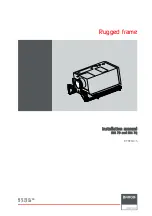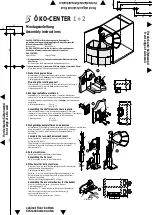
0
What is Latency?
Latency describes the amount of time it takes the input signal to pass
through the system, and reach the output. When recording a guitar and
monitoring through software, it is the amount of time it takes from the moment
you strike your guitar string, to the moment you hear it in your headphones.
You are used to this latency being very close to zero; when you play your
guitar through a guitar amp, you hear the signal immediately. So when you are
recording and monitoring via software, you want this latency (delay time) to be
as low as possible.
There are many factors that contribute to latency, and there is one in
particular that you can control: the software audio buffer size. The audio buffer
(also referred to as ASIO buffer on a PC, or Core Audio buffer on a Mac) is an
area in memory that Tracktion uses to hold your audio as it works. The buffer
size is measured in samples, and usually ranges from just a few samples to
thousands. The smaller the buffer, the faster the audio gets in and out of your
computer, and the lower the latency.
We would like to set this buffer as low as possible to achieve the lowest
latency, but there is another factor to consider: The smaller the buffer, the
harder your computer will have to work. To illustrate this, pretend you are given
five minutes to move water from a large bucket to another bucket ten feet away.
You must use either a large pint glass or a small whiskey glass to transfer the
water. Which would you choose? The pint glass of course. If you choose the
whiskey glass, you would quickly grow tired of running back and fourth moving
the small amount of water. Depending on your fitness and speed, you may not
be able to move it all in five minutes. This is similar to how your computer deals
with the audio buffer. If you choose too small a buffer, the computer needs to
work very hard to quickly transfer the audio in and out of the buffer. It may not
even be able to keep up, especially if you have lots of tracks, lots of automation
and/or lots of plug-ins in your work. If this happens, your audio may stop or “drop
out.” Drop outs at low buffer sizes may also occur if you have a slower computer
or not enough memory.
For low latency and good performance from your system, it is best to
adjust the buffer size to taste. You often need to use trial and error to find an
acceptable buffer size. In Tracktion, this is done by choosing the Settings tab,
choosing the Link.FireWire in the Wave Device drop down menu, and adjusting
the Latency. Usually, a setting less than 256 samples will yield fine results, while
a setting of 128 samples or less will be required for almost inaudible latency.
Note:
While you are recording, low latency is often a priority. Mixing existing
tracks on the other hand, does not often need such extremely small settings.
Many users adjust their buffer setting between the tracking and mixing stage.
Increasing the buffer size while mixing may allow you to run a few extra plug-ins;
try 1024 or 2048 samples.





































